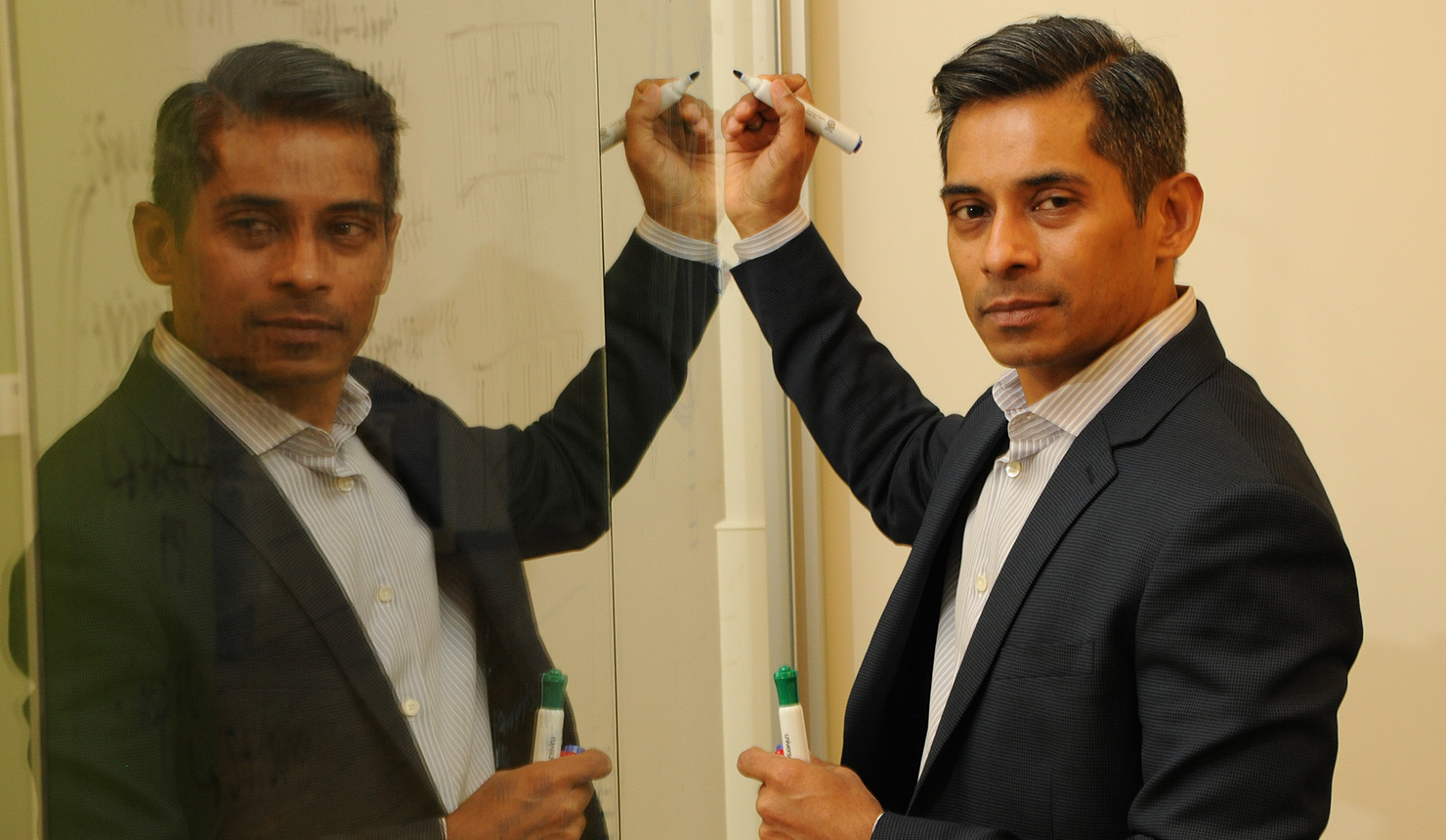Many of us may recognize biomedical informatics as the technology that was used in the Human Genome Project, which was launched around 1990. However, many people may not realize the breadth of this interdisciplinary field that draws upon computer science, computer engineering, information science, and cognitive psychology—where scientists develop ways to store, retrieve, organize, and analyze biological and health data.
Rapid advances in clinical science and technology, and the proliferation of large amounts of data now available in the scientific and medical communities, have only increased the field’s importance within clinical and translational research. Today, the work of biomedical informatics teams can range from developing the digital infrastructure and tools needed to help investigators do their work to creating the tracking systems that measure and report on their progress to funding organizations.
At Geisel School of Medicine’s Williamson Translational Research Building on the Dartmouth-Hitchcock (D-H) campus—this is the arena of Amar Das, MD, PhD, an associate professor of Biomedical Data Science, Psychiatry, and The Dartmouth Institute for Health Policy and Clinical Practice.
Dr. Das—who leads the Division of Biomedical Informatics within Geisel’s Department of Biomedical Data Science, directs the Biomedical Informatics Core within SYNERGY (The Dartmouth Clinical and Translational Science Institute), and heads up the Informatics Collaboratory for Design, Development and Dissemination—discusses his division’s critical role within Dartmouth’s research enterprise.

Q: How do you describe what your division does?
Das: There’s a nexus of activities that we do that can basically be thought of as having two main functions. One is helping people to access and manage data that’s being collected from different sources—everything from clinical trials to electronic health records.
The other is helping people build new tools or optimize the use of existing tools. We do that through our informatics collaboratory, which includes designers, software engineers and people who can do evaluation. Using a process we call agile software development, we’re able to create, test and roll out products much more quickly and effectively than with traditional methods.
Q: What are some of the tools you’ve developed to enhance the work of investigators across Geisel, D-H, and Dartmouth College?
Das: One is Inspire, our research management tool. It’s a modular, app-based platform developed for the Dartmouth SYNERGY clinical and translational science community to support service requests, research tracking, resource discovery, and project management. The various research “cores,” which provide services across the institution, love the system because it helps them keep their activities organized. And it also helps us with tracking, in terms of understanding the kind of research people are engaged in.
Another, Vivo, is our faculty profiling system that allows researchers to gather, store, and share information on things like the publications they’re working on, the grants they’ve received, and who they’re mentoring. And it gives us an institutional profile that we haven’t had online before, in a way that makes it easy for people to evaluate and assess what we’re trying to do.
A third, called ISIDRO, is a new tool that we’re developing to help us ensure that once data is passed from the clinical domain to the research domain—that it is encrypted and protected, and handled in a secure and confidential manner.
Q: Can you provide an example of projects you are working on at both the local and national levels?
Das: Locally, faculty in Data Science are working on a project called Randomize Everyone, which will allow us to put into the electronic health record system a way to build out studies that compare alternative treatments and collect data on patient outcomes. Right now, we’re partnering with the Weight and Wellness Center and the Spine Center to find the best methods for retrieving data on alternative treatments and feeding it back to the systems to help them determine the most effective interventions for patients.
At the national level, we’re working with the National Institutes of Health Clinical and Translational Science Award (CTSA) program—within which Dartmouth SYNERGY is one of 26 funded sites—to create a common IRB (institutional review board) platform. This will allow many more investigators (who may not have enough study subjects locally) to get their research efforts launched by joining multi-site trials. We think it’s going to be a tremendous benefit for the whole research infrastructure in the U.S.
Q: Can you tell us about your own research interests and activities?
Das: I was trained as a psychiatrist, but my informatics research cuts across many different disciplines—which have included immunology, autism, breast cancer, and HIV drug resistance. I have a set of methods that I work with and they can be applicable to multiple clinical situations.
My primary research is two-fold: I look at longitudinal patient information, such as treatment patterns across time, to assess how well those treatments match up with recommendations or guidelines. I also do a lot of work in what’s called patient similarity—where I search for patients in databases and measure their similarity to create cohorts of patients that can be used for outcomes studies.
In addition, I have a group of 10 students (PhD, Masters, and undergrads) that are engaged in a number of different projects—everything from a heat map of the research that is occurring (and can be viewed publicly) across the country to the discovery of networks and pathways of care in electronic health records.
Q: What is the biggest challenge for your group going forward?
Das: It’s really “big data.” There’s going to be huge amounts of information coming in from a variety of systems. We’ll need to keep innovating, using tools and techniques like data mining and machine learning to effectively gather that information, identify what’s valuable and valid, and then manage it within the clinical environments—all in a way that is secure and protects patient privacy.